Ahmedabad, a vibrant blend of heritage and modernity, offers iconic temples, historical landmarks, bustling bazaars, and cultural experiences. From spiritual retreats to scenic riverfronts, the city immerses visitors in Gujarat’s rich traditions, flavours, and timeless charm. Here’s a complete guide to heritage, cultural and spiritual experiences, and nearby attractions.
Ahmedabad, situated on the banks of the Sabarmati River, is one of India’s most joyous and colourful cities. Ahmedabad is a place where the blend of old-world charm and modern life creates a captivating narrative. Imagine walking the lanes of old heritage structures, the aroma of Gujarati snacks in the air, timeless temples to worship, buzzing night markets and Mughal-era mosques; the place holds a sentiment of magic in the air. From sipping chai around the riverfront to exploring handmade treasures through the bazaars, the city welcomes you with open arms. If you are considering an Ahmedabad tour package, here’s a guide to the places to visit in Ahmedabad, especially its famous temples and cultural highlights.
Which are the Top Famous Temples in Ahmedabad to Visit?
Swaminarayan Akshardham Temple, Gandhinagar Highway
A grand, famous temple in Ahmedabad, built entirely of stone, using 6000 tons of pink sandstone measuring 108 ft in height, 240 ft in length, and 131 ft in width. Embrace solace among intricate carvings and sacred rituals. What makes it much-awaited are its brackets, coloured arches, decorated halls and domes. One can feel the representation of Gujarati designs engraved into the beauty of the temple. The temple, filled with Swaminarayan idols, is a testament to timeless devotion and culture.
- Best time to visit: November to January.
- Temple timing: 9:00 am to 7:00 pm - Every day.
- Nearby Places: Adalaj Stepwell, Indroda Nature Park, and Sarita Udhyan.
Modhera Sun Temple, Modhera (Mehsana District)
Dedicated to the Sun God, it was built in 1026-27 CE under King Bhima I of the Chaulukya (Solanki) dynasty. The temple is famous for the Maru-Gurjara architectural style, which is an 11th-13th century western Indian style of architecture. This Sun Temple in Ahmedabad includes façades, a stepped tank (Surya Kund), Sabha Mandapa (assembly hall), etc., offering devotees an intriguing glimpse into ancient Hindu craftsmanship and devotion.
- Best time to visit: October to March
- Temple timings: 6:00 am to 6:00 pm - Every day
- Nearby places: Rani Ki Vav, Patan, and Sun Modhera Rd, Ambaji.

Hare Krishna Mandir, Bhadaj
Located on the outskirts of the city, the Hare Krishna Temple Bhadaj is a serene spiritual retreat surrounded by greenery. Dedicated to Lord Krishna and Radha, the temple is known for its devotional chants, soulful bhajans, and cultural programmes. The temple's architecture combines spiritual simplicity and artistic detail, inviting visitors to pause, reflect and connect. Visitors often attend the evening aarti, which creates an atmosphere of peace and devotion, making it a must-visit spot in Ahmedabad.
- Best time to visit: Morning and Evening
- Temple timings: 7:00 AM–8:15 PM (Daily)
- Nearby places: Gujarat Science City, Vastrapur Lake, Sardar Patel Museum
Hutheesing Jain Temple, Old City
The Hutheesing Jain Temple, a famous temple in Ahmedabad, built in 1848 by Sheth Hutheesing, is a beautiful white marble shrine dedicated to the 15th Jain Tirthankara, Shri Dharmanatha. Loaded with 52 shrines, ornate pillars, and the grand Mahavir Stambha, it beautifully blends architecture from yesteryears. Travellers absorb the timeless mastery of Jain culture, all combined into one.
- Best time to visit: October through March
- Temple timings: 7:00 AM to 8:00 PM
- Nearby places: Calico Museum of Textiles, Sabarmati Ashram, Manek Chowk
Vaishno Devi Temple, Sarkhej
Vaishno Devi temple is a replica of the original temple located at Katra, Jammu and Kashmir. Devotees flock towards the temple in fulfilment of praying to the goddess, who is famous in Indian culture. The temple is made out of manmade yellow stones in a circular shape, which houses many beautiful carvings that showcase the grandeur of the place. Pilgrims have to walk through artificial hills to the main shrine located at the top of a hill in Sarkhej, Ahmedabad.
- Best time to visit: October–March
- Temple timings: 5 AM – 10 PM
- Nearby places: Sarkhej Roza, Vastrapur Lake
Arya Samaj Mandir, Ahmedabad
For those seeking a famous temple in Ahmedabad with simplicity and Vedic teachings, the Arya Samaj in Ahmedabad is an important spiritual centre. Unlike ornate temples, it follows the teachings of Swami Dayananda Saraswati and conducts rituals like havens and discourses focusing on moral values and social welfare. The temple, other than being a prominent worship spot, also acts on fulfilling Swami Ji’s promise of equal education, building a caste-less society, and organising marriages without pomp and show. Many devotees consider it one of the most significant places connected to the Arya Samaj in Ahmedabad.
- Best time to visit: Year-round, mornings preferred
- Temple timings: 6 AM – 8 PM
- Nearby places: Law Garden, Sabarmati Ashram
Dholeshwar Mahadev Temple, Dholka
The temple is thought to be thousands of years old, possibly from the Mahabharata era. Dedicated to Lord Shiva, the temple is a testament to various puranas written by Saint Maharishi Ved Vyas and is believed to be the Kashi of Gujarat. What's more! If a devotee can't go to Kashi, they can visit this temple and bathe in the Sabarmati River for the same blessing. Visiting this temple will provide pilgrims, researchers, and history buffs with information about the various rituals and cultural heritage of the place.
- Best time to visit: October-March, festive season
- Temple timings: 6 AM-9 PM
- Nearby places: Lothal, Nal Sarovar Lake
Jagannath Mandir, Jamalpur
If you want spiritual blessings from a famous temple in Ahmedabad, then Jaganath Mandir is the place to be. It is said that sadhu Shree SARANGDASJI went for a spiritual trip to Orissa, wherein he got a visionary instruction from Lord Jagannath to go back to Ahmedabad and install the holy idols of the Trinity, Lord Jagannath, with his elder brother Lord BALDEVJI and sister Goddess SUBHADRAJI. From the establishments of the idols, many devotees visit the temple and follow the rituals around the meditational surroundings, immersing themselves in centuries-old tradition and culture of devotion.
- Best time to visit: October to March.
- Temple timings: 5:00 am to 12:00 pm, 4:00 pm to 9:00 pm - Every day.
- Nearby places: Kankaria Lake, Sidi Saiyyed Mosque, and Sabarmati Ashram.
Which are the Best Places to See Near the Top Temples in Ahmedabad?
Sabarmati Ashram
Visit the place that gave birth to the Indian independence movement, with Mahatma Gandhi taking centre stage. Established in 1917, the Sabarmati Ashram became the heart of Satyagraha, amidst the hum of spinning wheels, and the murmur of prayers for a new India. Check out the humble desk, the innovative chakra designs, letters, mats, a large dormitory and the halls where the freedom discussion would take place. A walk through the ashram is both inspiring and reflective, making it one of the most important places to visit in Ahmedabad.
- Best time to visit: October to March
- Timing: 8:30 AM to 6:30 PM
- Entry Fees: No entry fee

Dada Harir Stepwell
The Dada Harir Stepwell showcases intricate masonry and architecture, offering visitors a glimpse into a glorious past. Amazingly built in 1499, under the supervision of Sultan Begada’s harem, the place has five levels of carved stone columns, and wells which are now dry. Tourists visiting the place can feel cool temperatures at the depth even during the hottest of days. As you gaze down the stepwell, birds circle overhead, and the atmosphere of the structure instantly carries you back in time. Go right behind the stepwell and get mesmerised by the 16th-century Dai Halima Mosque with an elegant level of Jali work framed by the artisans of the past.
- Best time to visit: All year round, especially early morning
- Timing: Saturday 9 AM to 5 PM, on Sundays 9 AM – 6 PM
- Entry fees: No entry fee
Bhadra Fort
Constructed by Sultan Ahmad Shah in 1411, Bhadra Fort is one of the oldest landmarks of the city. The fort is famous for its Indo-Islamic arches and carvings. Together, they represent Ahmedabad’s glorious Sultanate-era past. The British took over the fort in 1817 from the Marathas and converted it into a prison during the British rule in India. What’s the best part? Tourists could absorb the various historical accounts of the fort, wherein the place is home to a mosque, Bhadra Kali Temple, Nagina Baug and the castle, all within the vicinity of the fort.
- Best time to visit: November to February
- Timing: 9 AM – 5 PM
- Entry fees: No Entry fee
Jhulta Minar
The mysterious Shaking Minarets, or the Jhulta Minar, have left many architects and engineers intrigued by this unresolved wonder. The puzzle lies in the fact that shaking one minaret causes the other to vibrate, while the connecting passage between them remains vibration-free. When in Ahmedabad, tourists flock to the Sidi Bashir Mosque to relish its Rajputana and Mughal architectural styles and the two unusual minarets that served as the entrance to the mosque.
- Best time to visit: October to March.
- Timing: 7 AM to 7 PM
- Entry fees: No entry fees
Kankaria Lake
Be a part of the second-largest lake of Ahmedabad, bringing a good respite from the hectic streets. Known as the Hauz e Qutub, the lake was converted for recreational purposes for the public. Capture Instagram-worthy moments, soar in a tethered hot air balloon, hop on the mini train, stroll along the colonial Dutch tombs on the lake’s west side, and explore the lakeside entertainment zone that keeps kids engaged for hours.
- Best time to visit: October to March
- Timing: 7 AM to 7 PM
- Entry fees: No entry fees
Sabarmati Riverfront, Ahmedabad
The Sabarmati Riverfront is a vibrant urban space along the Sabarmati River in Ahmedabad, blending recreation, culture, and leisure. Sightseers can enjoy scenic walks along well-maintained promenades, take boat rides, or relax at landscaped gardens. The area hosts cultural events, food festivals, and open-air activities, making it ideal for families, couples, and photography enthusiasts. With its lively atmosphere and stunning sunset views over the river, it’s a must-visit city landmark for tourists.
- Best time to visit: October to March
- Timing: 9 AM – 9 PM
- Entry fees: No entry fees
Auto World Vintage Car Museum, Ahmedabad
Are you a vintage car enthusiast? Then visit the Auto World Vintage Car Museum, which houses over 100 unique vintage and classic vehicles. Founded by Shri Pranlal Bhogilal in 1927, the museum features luxury brands like Rolls-Royce, Bentley, Jaguar, Maybach, Chrysler, and Cadillac. The key highlights include convertibles, limousines, motorcycles, boats, and horse-drawn carriages, many of them custom-made to order. Travellers can enjoy guided tours and photography through the museum.
- Best time to visit: October to March
- Timing: 8 AM to 9 PM
- Entry fees: INR 50 per person
How to Reach Ahmedabad?
By Air:
- Reach the Sardar Vallabhbhai Patel International Airport (AMD), which is connected to major Indian cities and international destinations.
- 8 km from the city centre; taxis, app-based cabs, and airport shuttles are available.
By Train:
- Major railway hubs such as the Ahmedabad Junction (ADI) connect the north, west, and south of India.
- Options: Shatabdi Express, Jan Shatabdi, and other express trains.
By Road:
- Well-connected highways from cities like Mumbai, Delhi, Jaipur, and Surat.
- For buses, GSRTC (state-run) and private Volvo/AC coaches are available.
What Should Tourists Keep in Mind While Visiting Ahmedabad?
- Carry water and sun protection during the summer.
- Dress modestly when visiting religious sites.
- Photography is allowed at most spots; some museums may restrict flash photography.
- Guided tours enrich your experience, especially at historical and cultural sites.
- Try local favourites such as Dhokla, Fafda, Thepla, and a traditional Gujarati thali for an authentic taste.
Ahmedabad is more than just a city; it is a living museum of temples, heritage, and vibrant traditions. For those searching for ‘Ahmedabad near temple’ experiences, the city offers a list of places and temples to visit in Ahmedabad, and visitors may realise how time flies by. From the divine chants to eye-catching attractions, Ahmedabad tourism adds a layer to the city’s charm as it takes you through its famous places that connect you with Gujarat’s soul.
FAQs
Q1. What is the connection between the Jain Temples of Ahmedabad and the Ancient Indus Valley Civilization?
The Jain temples in Ahmedabad, such as the Jami Masjid and Bhadra Fort Jain Temple, have remnants that date back to the Indus Valley Civilization. For example, many temples incorporate ancient architectural styles, such as the use of beadwork and stone carvings, which are believed to be inspired by Indus Valley art. The Jain community in Ahmedabad has been preserving such ancient designs, creating a bridge between ancient and modern architecture.
Q2. What is the legend behind the Hathi Singh Jain Temple in Ahmedabad?
The Hathi Singh Jain Temple, built in 1850, has an interesting legend associated with its name. It is said that the temple was constructed after a wealthy merchant, who had a dream of two elephants worshipping the Tirthankara, donated funds to build it. The name "Hathi Singh" translates to "Elephant Singh", and the entrance of the temple features elephant sculptures on both sides, a tribute to the story.
Q3. Why is the Sardar Vallabhbhai Patel National Memorial also known as a Temple to Indian Unity?
The Sardar Vallabhbhai Patel National Memorial in Ahmedabad is technically not a traditional temple, but it’s often referred to as a temple to unity. The memorial includes a bronze statue of Sardar Patel and showcases his dedication to uniting India post-independence. Visitors consider this place a form of spiritual tribute to the politician and leader, with reflections on national integration and patriotism.
Q4. What’s the spiritual importance of the Kankaria Lake Temple?
The Kankaria Lake Temple in Ahmedabad is a lesser-known temple with a historical connection to the water spirit of the city. The temple overlooks Kankaria Lake, a man-made reservoir created by Sultan Qutb-ud-Din in the 15th century. The lake itself is considered to have spiritual significance, and the temple offers a peaceful retreat with its calm surroundings. Visitors often seek blessings from the deity here for tranquility and prosperity.
Q5. What’s special about the Shri Bal Hanuman Mandir in Ahmedabad?
This temple is unique because it is dedicated to Bal Hanuman, a form of Lord Hanuman believed to protect children from ill health. It is said that the temple is built on a very old site, and the main idol of Hanuman is made out of black stone, which is said to have healing powers. The temple is most famous for its annual Bal Hanuman Jayanti, a festival celebrated with much zeal by families with young children.











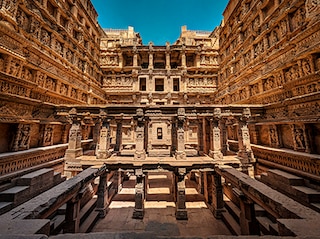


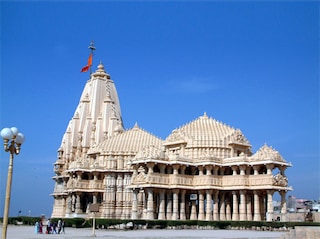
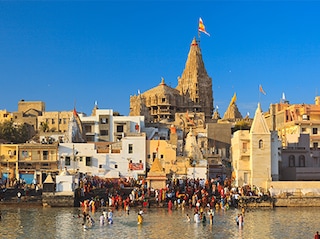




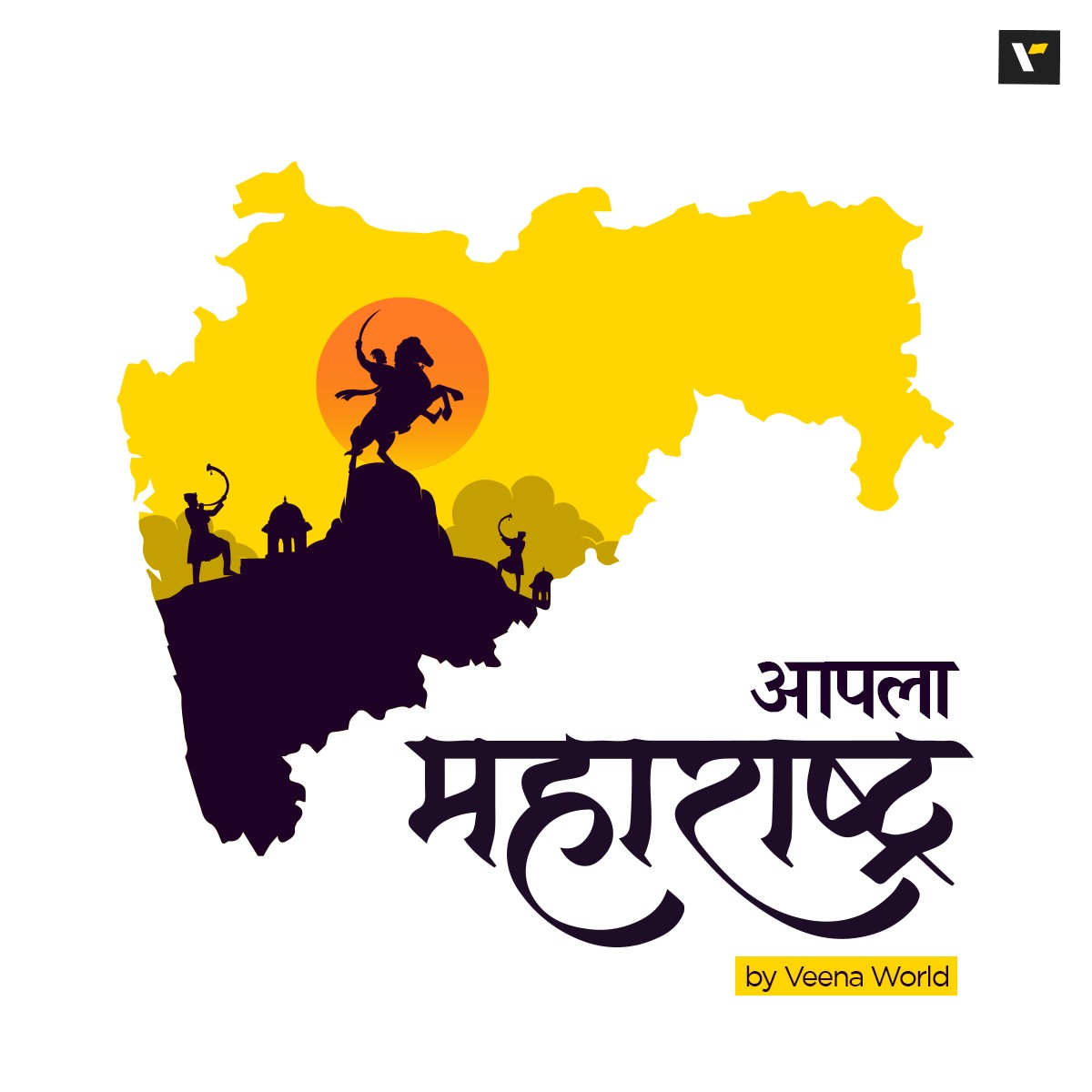










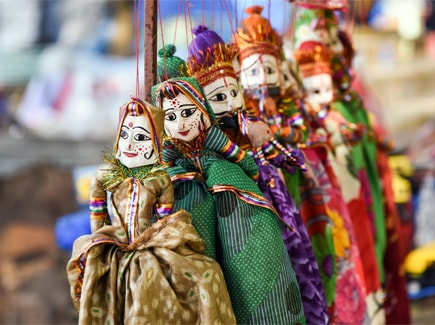

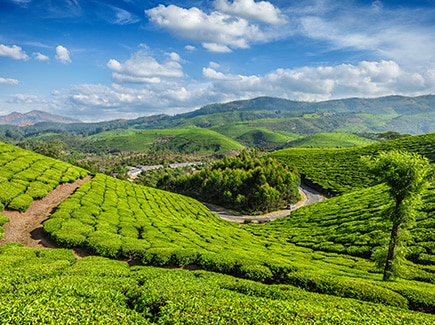
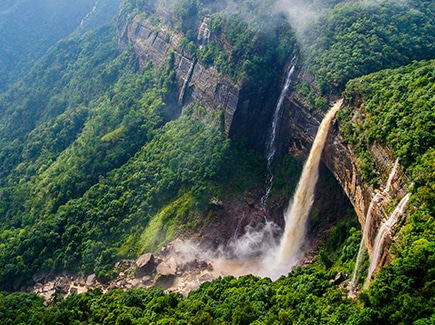

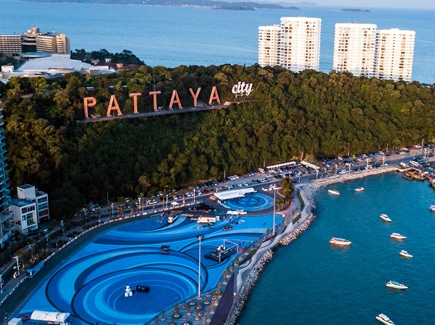

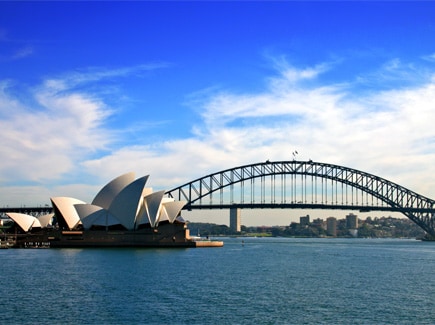
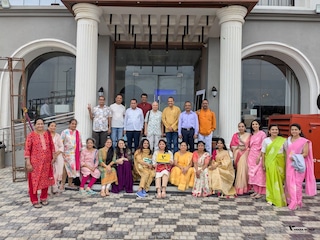








Post your Comment
Please let us know your thoughts on this story by leaving a comment.